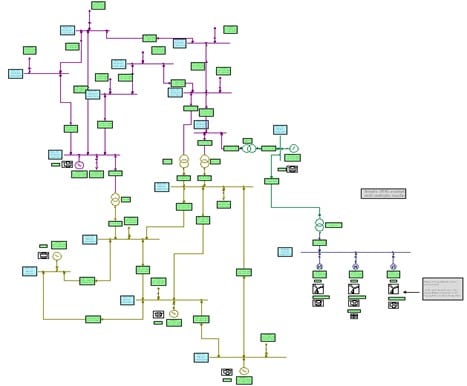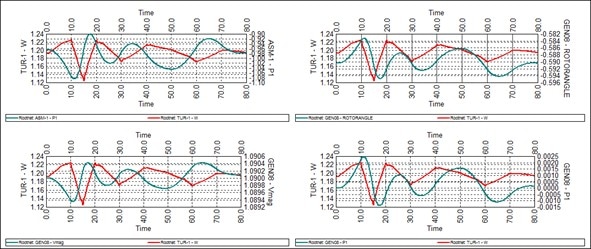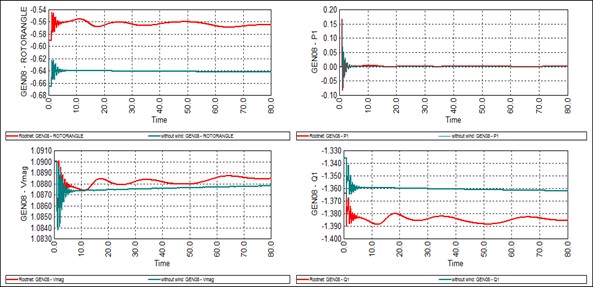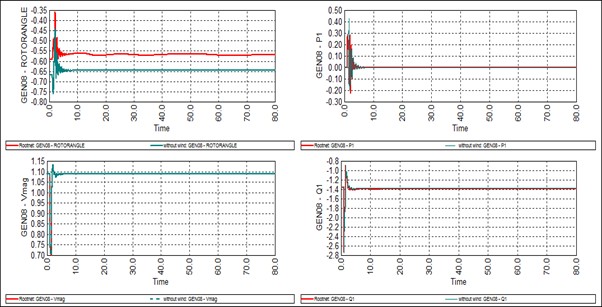
Together with the development and the improved production technology, the wind turbine performance has drastically improved.
Considering the fact that wind plants grow in size and number in power networks worldwide, many questions about the possible impacts on the electrical grid arise, and there is need of answers to those questions and solutions to the potential problems.
Don’t forget that you can participate in the community blog by sending us your articles by email
Introduction
According the researches that have been made, the main issues that need studying are excellent wind power forecast, reliable development of storage system, response management, electricity market analysis and design, and at the end the transient stability during abnormal processes.
These days, the dynamic stability and the frequency response suffer from the impacts at high
penetrations of wind power, because the wind generators which actually are non-synchronous and cannot provide direct inertial response when the grid frequency changes because they are electrically decoupled from the electric power grid.
In this article, we have presented the modified IEEE-14 bus test system. We have added three different kinds of wind turbines connected in node 8, so we can investigate how the integration of the wind turbine in the system will affect the transient stability of the electrical power system.
DFIG Wind power plant model
The wind power generator and the controls are a complex electrical and mechanical system. One typical wind power system consists of generator, gear-box, three- blade rotor, and control devices for voltage, wind speed and blade angle.
The wind power plant model has six modules:
- Asynchronous machine model
- Wind turbine model
- Pitch control system
- Control system model for the speed
- Control system for the AC voltage
- Control system model for the crow-bar
In a double-fed induction generator, the voltage or the rotor current can be controlled with the use of power electronics, which gives greater controllability of the induction generator. Figure 1 represents the block diagram model of the Double Feed Induction Generator with type C turbines.

Figure 1. Block diagram of the DFIG model
Impact of wind power on the power system stability
Increased wind power penetration results in reduced inertia within the system which can actually lead to rotor angle stability problems. These problems occur during disturbances like bus faults, line removals etc. in the electrical power system.
Transient stability is the ability of the electrical power system to maintain its synchronism during those disturbances. Disturbances time frame of interest is 3–5 s.
The generator—turbine inertia plays a significant role in providing synchronizing capability to the synchronous generator, in case a disturbance causes a mismatch between the mechanical power input and electrical power output of the generator.
Several scenarios have been examined in this article on the IEEE test network, presented on figure 2. The first scenario is when we have an impact on the generator near the wind plant. The second case is when we are facing outages on the 3 – 4 transmission line, and the last case is when we have three phase faults on the 3 – 4 transmission line.

Figure 2. The IEEE-14 bus test system
In Figure 3a we have the wind velocity variation and the impact of wind plant production on the bus voltage, power variation of G8 and the rotor angle. In Figure 3b the variation of voltage regulation and wind velocity variation, the reactive power of synchronous and wind generator are presented.

Figure 3 (a). The impact of wind plant variation on parameters of wind generator G8

Figure 3 (b). The impact of wind plant variation on parameters of wind generator G8
In Figure 4 the impact of wind plant variation on the rotor angle, reactive and active power of G8 and the voltage, during the outage of transmission line 03-04, are presented.

Figure 4. Impact of wind plant variation on parameters of G8 during outage of transmission line 03-04 (the green line without wind power and the red line with wind power)
In Figure 5 the impact of wind plant variation on rotor angle, active and reactive power of G8, voltage, during three-phase fault on the affected transmission line 03-04 and faulted line 03-04 outage.
We have observed the impact by comparing the behavior of the electrical power system with no wind power penetration and the other case is with wind power penetration.

Figure 5. Impact of wind plant variation on parameters of G8 during three-phase fault on the 03-04 transmission line and faulted line 03-04 outage
(Green line without wind power and the red line with wind power)
We can see that when the system has penetration of wind power, increased variation of the rotor angle appears when the wind power units are connected to the electrical grid. The relative rotor angles achieve larger oscillations during post fault transients when the wind power is present.
In another test case, the same three-phase fault is applied in different transmission lines. We are making this test case just to evaluate the CCT value of the electrical system. When the synchronous generators are replaced with wind power units, the system inertia is decreased and leads to reduction of the CCT value.
Conclusion
We can conclude that the wind power plant affects the synchronous generators behavior near the wind plant, by causing changes in the parameters and unnecessary actions of control systems.
Relative rotor angles always tend to achieve larger oscillations during the influence of post fault transients when wind power plant is present in the system. By replacing the synchronous generators with wind power plant units, the total system inertia decreases which leads to reduction of the CCT value.
If we compare two systems (one with power unit and the second one without wind power unit), the difference between the CCT can be reduced up to 15% of the CCT value of the power system with no wind power unit installed in the system.
From the simulation results we can determine that the wind power penetration levels, the type of system topology, type of disturbance, and at the end the location of a fault are very important factors when we are determining the nature of the impact of the wind power unit penetration on the electrical system.
Your thoughts on Mile’s article?